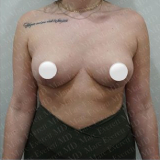New York Hair Restoration
Consultations offered at our two convenient locations in Manhattan, NY and Queens, NY

Follicular unit extraction (FUE) is a surgical procedure that uses a minimally invasive, natural approach to hair restoration. Genetic hair loss, also known as androgenetic alopecia, affects an estimated 85 percent of men and 40 percent of women by age 50, making hair loss a far-reaching and common problem. Dr. Marc Everett offers FUE to their patients as an effective and modern treatment for male and female pattern baldness.
Contents
What Causes Hair Loss?
Despite its prevalence in both men and women, experts are still working to uncover the main cause of hair loss and develop a cure. While the exact reason behind it remains undiscovered, several factors can influence hair loss, including:
- Genetics, especially a family history of hair loss
- Sex, as men are more susceptible to hair loss
- Periods of prolonged stress
- Physical or emotional trauma
The main culprit behind hair loss is the male hormone dihydrotestosterone (DHT), which is present in both men and women. For an unknown reason, the growing cycle of hair follicles becomes more sensitive to DHT with age and can be halted completely by the presence of the hormone, eventually leading to baldness.
Men only experience the hair loss effects of DHT along the top of the scalp, creating viable donor sites on the sides and back of the scalp filled with hair follicles that are DHT-resistant. Women, unfortunately, have no DHT-resistant areas, decreasing but not eliminating the likelihood that they can be good candidates for hair transplants.
The Procedure
FUE is performed using local anesthesia to ensure patient comfort throughout the procedure. Individual follicular units containing an average of one to five hairs each are removed from donor sites on the scalp. The strands of hair within each follicular unit share the same root system, so removing the entire unit provides a high survival rate for the donor grafts. The follicular units are removed using a small handheld device that makes a circular punch in the scalp. The grafts are stored and kept hydrated to keep them properly preserved as the procedure continues.
Once a sufficient amount of grafts has been harvested, the implantation part of the surgery can begin. Grafts are precisely implanted into the balding parts of the scalp to fill in bald spots, rebuild hairlines and otherwise restore sections that have been affected by hair loss. Great care will be taken to transplant the grafts in natural patterns so they blend in seamlessly with surrounding hair.
Recovery & Results
Following surgery, the scalp will be red and very sensitive. Patients will need to refrain from touching their scalp to avoid dislodging new grafts and harming their results. Sleeping with an elevated head for the first 48 hours will help the scalp heal and reduce swelling. Side effects, including redness, swelling and scabbing will diminish over the course of one to two weeks. FUE typically does not produce much scarring, although faint circular marks may be visible in the sections of the scalp that were used for harvesting grafts. Surrounding hair growth will completely hide any residual signs of the surgery.
Results will take some time to develop but will be worth the wait. Newly implanted follicles will shed their hair around two to three weeks following the surgery and enter a resting phase for up to three months. At this point, new hair growth will begin and start to become visible. Results are most evident around six to nine months after the procedure and continue to improve for up to 18 months. Patients should expect to wait around one year before enjoying their natural, thicker hair.
FAQ
Can women receive hair transplants?
Because women do not have DHT-resistant donor sites, they are not always good candidates for FUE. Despite this, some women are still able to provide enough donor grafts and undergo hair transplantation surgery. Schedule a consultation with us to receive a proper evaluation and determine if you are a good candidate for FUE.
How long before I can go back to work?
As a minimally invasive procedure, FUE patients can technically return to work the day following their surgery. However, due to visible side effects, patients should plan on taking a few days off from work or schedule their surgery at the end of the week to allow their scalp time to recover before resuming normal activities.
How visible are scars?
Scarring following FUE is minimal and easily covered by surrounding hair. Proper aftercare following surgery will ensure a prompt recovery that results in less scarring. We will provide you with plenty of information following your procedure to assist your recovery process.
How long do hair transplants last?
Hair transplants are a lifelong investment that you will benefit from for years to come. The hair that has been transplanted will retain its DHT-resiliency, despite being transplanted to balding areas of the scalp. While hair transplants can successfully restore thicker hair, it is important to note that transplants do not prevent future hair loss. Any further hair loss can be mitigated using medicated products to maintain results following hair transplantation surgery. We will discuss all of this in more detail during an initial consultation and provide professional advice to you throughout your hair restoration process.
Do results from FUE look natural?
Outdated hair transplant procedures produced an infamously unnatural look and were referred to as hair plugs. Doctors were unable to harvest smaller grafts and had to rely on transplanting larger clusters of follicles that did not blend well in with surrounding hair and failed to provide natural-looking results. Unlike past procedures, FUE utilizes individual follicular unit grafts, creating natural results that are indistinguishable from the real thing. If you are interested in hair restoration but scared of receiving a “pluggy” hairline, schedule a consultation with us to learn more about how modern hair transplant procedures have advanced in recent years.
We want you to love the way you look. With FUE hair transplantation surgery, Dr. Marc Everett can rebuild your hairline and combat genetic hair loss using the latest in modern hair restoration techniques. If you would like to learn more about FUE, call us today to schedule a consultation. To book an appointment, call us today at 212-774-7715.







